Deep Space Computing - A Garage Mining Company
I came into Zen philosophy when learning LISP, the first language designed for Artificial Intelligence. As for how much I understood, in Zen philosophy there is no past and future, but only present. In present there are lot of threads entangled representing all what it is and what could have been if... Our perception that we exist is a misconception: there are only the threads living in this precise moment. Well, maybe I didn't understand Zen at all, and I can't program LISP as well!
In the following I will use date and times, they are practical to tell a story, but remember they do not exist in Zen philosophy, at least in my version of Zen, leisure upgrade, not mandatory.
So, the first thread starts back on May 29, 1999 when I registered at Seti@home. I was fascinated by radio telescopes, not to mention aliens. Back at the time I thought Fourier Transform sounded to me like some recipe for cookies! At the time I was running Mandrake Linux on a 80486DX2 with floating coprocessor (the SX was without) at the student's house. It featured 33MHz clock and 66MHz in turbo mode when pressing the turbo button. I still have a picture of it running in its dedicated server room:
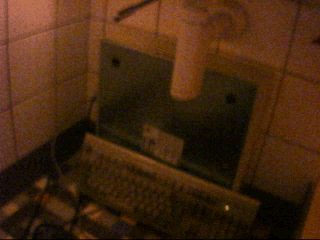
Picture: Server algol running in my bathroom at the student's house. The keyboard broke due to humidity and started sending rubbish to server who died two weeks later
When booting on Windows 95 it was running Maple student edition and Oberon emulator. And of course it was steeming work units of Seti@home when in Linux mode. One took 48 hours to compute if I remember right, it was 3 minutes of radiosignals recorded by Arecibo. This was the mechanism used to silence the loudy whistling harddisk which almost cut my personality in two:
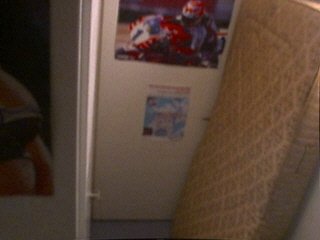
Picture: Silencing mechanism for algol server in place during nights when no guests needed mattress.
The thread about me getting schizophrenic I leave out, one consequence is that I am quite sensitive to noise...
Then I learnt about Gnutella, the first Peer to Peer network to share files and here another thread forks on this steemit article. It is a hard fork which will last about until end of 2014 when the last miners left that particular Zen blockchain...
So let's rewind back to 2000. I was sitting with my friends in cafeteria. Our favourite conversation topic was about founding a company. We talked about it over the next 17 years and still did not found one. One practical lesson I learnt in life is that if you wait for something to happen, it will never happen. This applies for jobs, girlfriends and of course companies. The endeavour was even more difficult, as we never figured out exactly what the company should do.
In 2016 I found an Angel Investment site, where you can publish an idea and seek for investors to fund it. My ideas are never too original, they are elaborations or copies of something else. I read Elon Musk's biography, so inspired by his achievements, I proposed a company named "Deep Space Computing" on the site. "Deep" in the name was for "Deep Learning" and "Space" was for big data, I like buzzwords :-). The idea was to build, operate and sell CUDA supercomputers (basically computers with multiple Nvidia graphics cards) and mini supercomputers (think of Raspberry Pi clusters) and to program software for it: for example to forecast weather and customers buying habits in little shops. Not worth to mention that nobody was interested. In one occasion, I tried to sell the Cuda supercomputer when applying for a job, but failed. Being a ham radio enthusiast, the idea was also to build radiotelescopes for the coming space revolution lead by Musks's SpaceX. Honestly, I built two prototypes with the goal to listen NASA space probes, but failed again. Still the endeavour is not completely impossible giving the advances in sensitivity done by receivers. A ham radio friend, IW2FZR, living not far away from me has a 4 meter satellite dish and can bounce signals from the Moon. This is me in front of Dario's four meter satellite dish
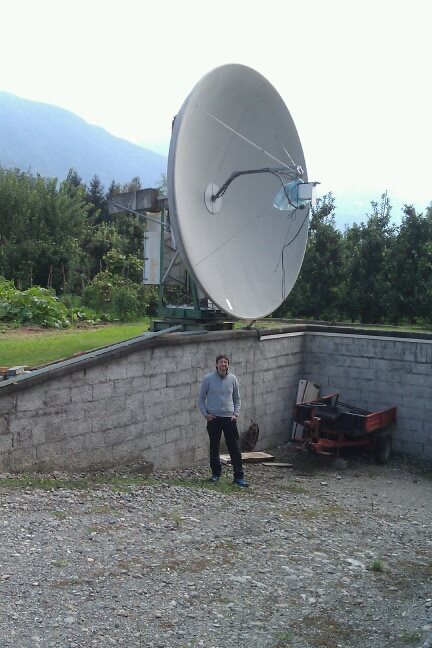
Picture: Tiz in front of Dario Ferrari's (IW2FZR) 4 meters satellite dish. Dario showed to me how it can bounce signals from moon even while outside it was raining. This is called EME activity in ham radio jargon for Earth-Moon-Earth.
And now let's dive back in 1991. I remember myself in a blue light of a C64 debugging my own version of Conway's game of life. I was following instructions from articles of Martin Gardner in Scientific American on how to implement it. Still, I could not get the glider pattern to fly. All rules were implemented correctly! No matter what I changed, the glider kept disintegrating at their place, imploding like the cattle of Alice's Adventures in Wonderland.
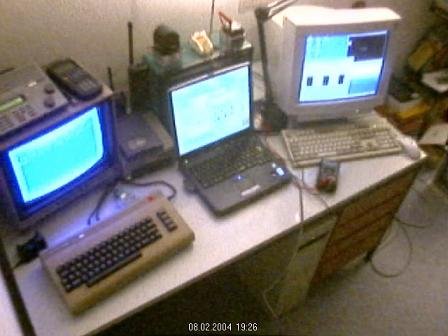
Picture: the C64 depicted here is a newer one I bought at a flea market. The original C64 broke when I pushed it too close to the wall and the print cable did a short circuit. This was in 1994.
I was almost giving up with everything, when the solution flashed in my brain: I was not using one matrix for the previous state and one for the next. I did everything inline in one single matrix, this was why Game of Life was broken! This was the point when I decided that my life will be dedicated to build and program computational systems.

Picture: the famous cannon glider pattern of Conway's game of Life in action. If I remember right, I was using for the matrix the size of the C64 screen in chars. Doing so, it was not enough big to simulate the cannon but only single gliders, although I would have liked very much to simulate it. Source: wikipedia
So speaking of my personal Game Of Life... Did I achieve this goal? Well yes and no. At times I programmed code for a particle accelerator. I did cryptoanalysis on commercial ciphers. I enhanced a social security calculator. In these jobs I was paid well though for short times. I wrote a star visualizer and a database synchronization tool as open source project. As Open Source developer I starved, but in fact I am a lazy open source developer, my code works but it is not beautiful to look at. But who am I now? Do not abhorr me: I ended my days as Microsoft SQL Developer and as Microsoft MVC C#/Javascript web developer... I could finish the article here to emphasize this tragedy, but no wait, life is made to fight and our fate is most of the time in our hands. So, let's try to turn the tragedy, if not in epic work at least in a comedy :-)
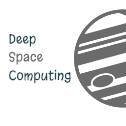
Picture: Proposed Deep Space Computing Logo
If you visit me between 9 o'clock in the evening and midnight or between 4 and 7 o'clock in the morning you find me best at garage level. I finally decided what my company will do. Our company I should say, as we are already 4 miners and 5 investors plus 2-3 other people helping. Yes, it will be a Gridcoin company! We will mine Gridcoins and the most powerful miner is named "Deep Space" as it computes most of the time Seti@home, Einstein@home and Asteroids@home. I do not want garbage in my garage, so no dark matter with Milkyway@home! Deepspace does a Seti@home workunit in about 3 minutes and having three Nvidia GTX 1080 Ti, it does 3 workunits at a time. What an incredible speedup compared to the old brave days in 1999!
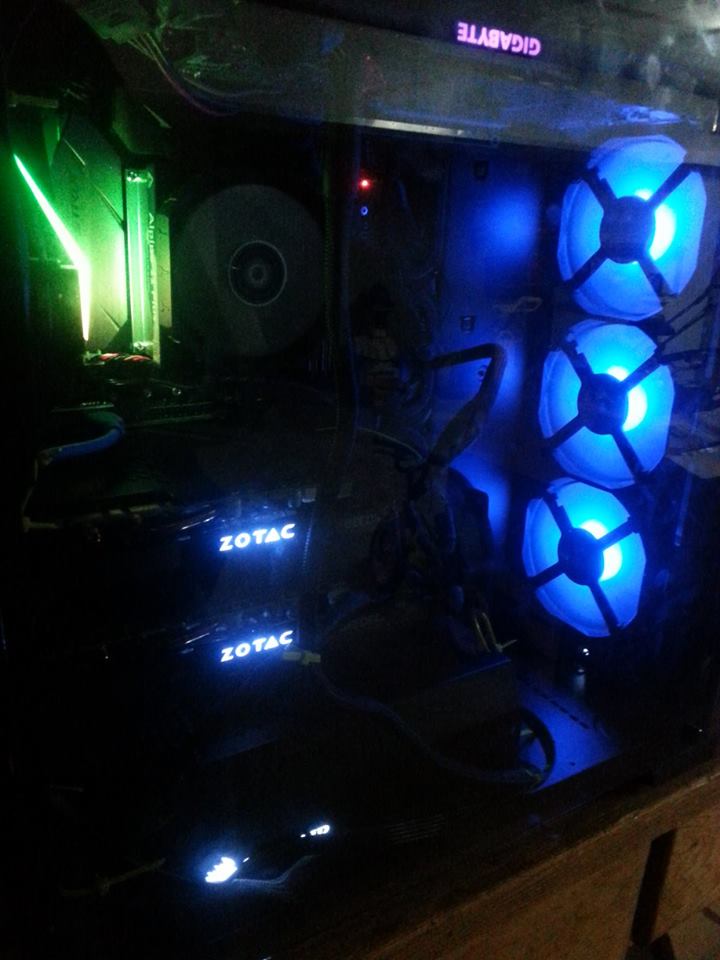
Picture: computer deepspace by night. I bought it with bells and whistles to showcase it to potential customers.
You might wonder where I had the money to build this rig. It comes from a good investment in 2016 in Nvidia and Tesla shares. At the moment I realized 9'000$ of this investment and put about 3'000$ into Deepspace computer, 3'000$ into Gridcoins and 3'000$ are reserved for power consumption expenses. I still own a bunch of these Nvidia and Tesla shares and hope in the future to milk some more money out of them and to invest in what I deem is an even more profitable investment: Gridcoin.
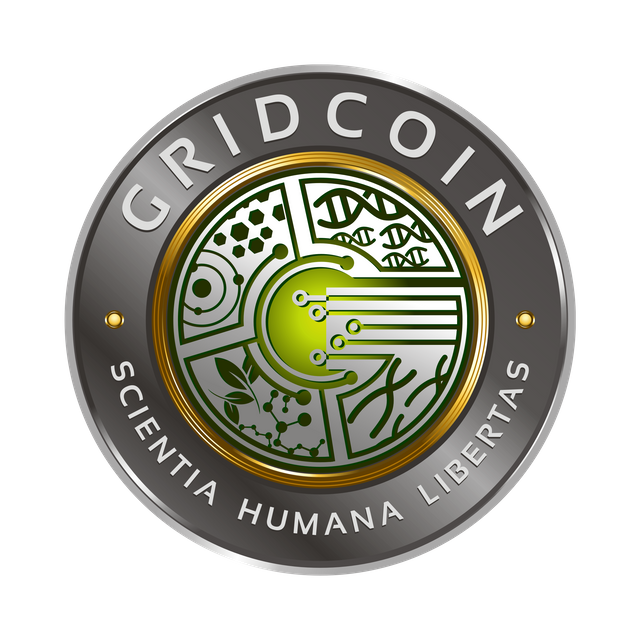
Picture: the Gridcoin Art medal
We are building CUDA supercomputers and mini-PC supercomputers to be used as miners and we have lot of fun. We got lot of old Intel Core Duo donated from the hardware shop of my father and we are looking to revive them like careful nurses. We also spend them old but efficient graphic cards (e.g. Nvidia GT 630, 384 Cuda Cores, 49W).
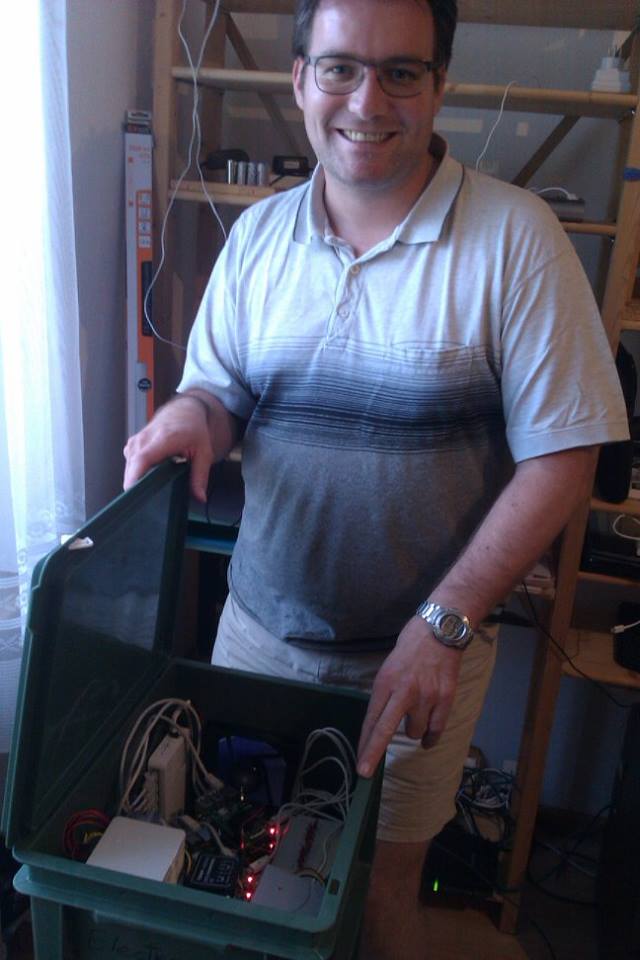
Picture: Marino Crameri showing his box with several Raspberry Pi3. The box features thermoelectric cooling (Peltier), dedicated fans and a homematic thermosensor to monitor the cluster.
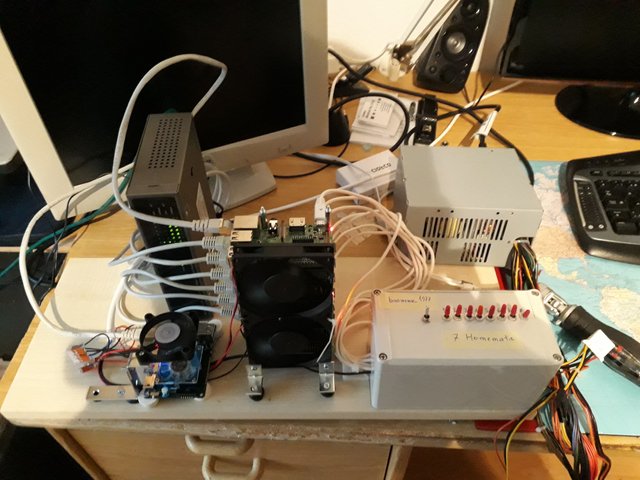
Picture: Marino's cluster out of the box for maintenance.
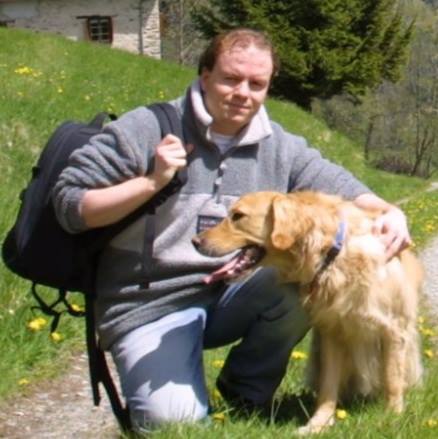
Picture: René Saillen is a miner of Deep Space Computing.
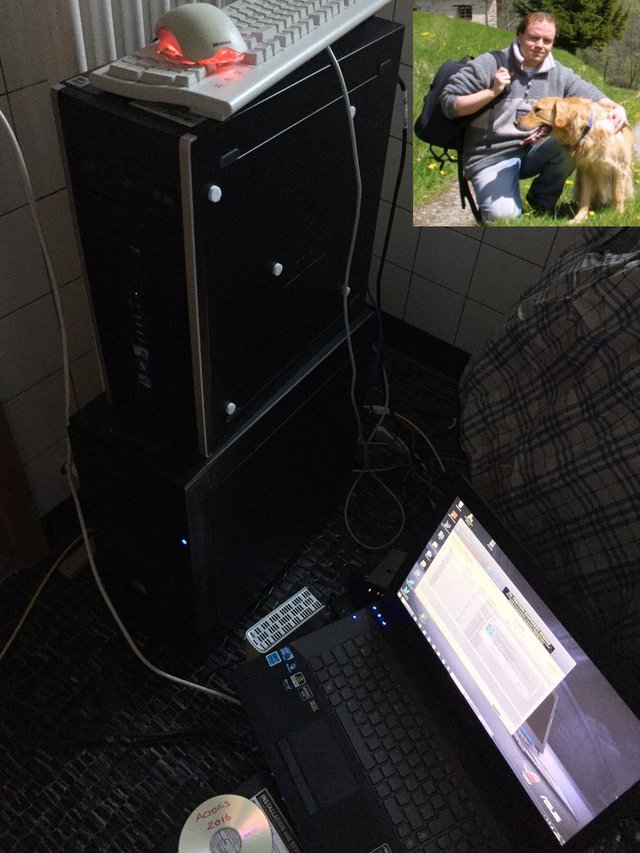
Picture: Saillen's computers in its server room.
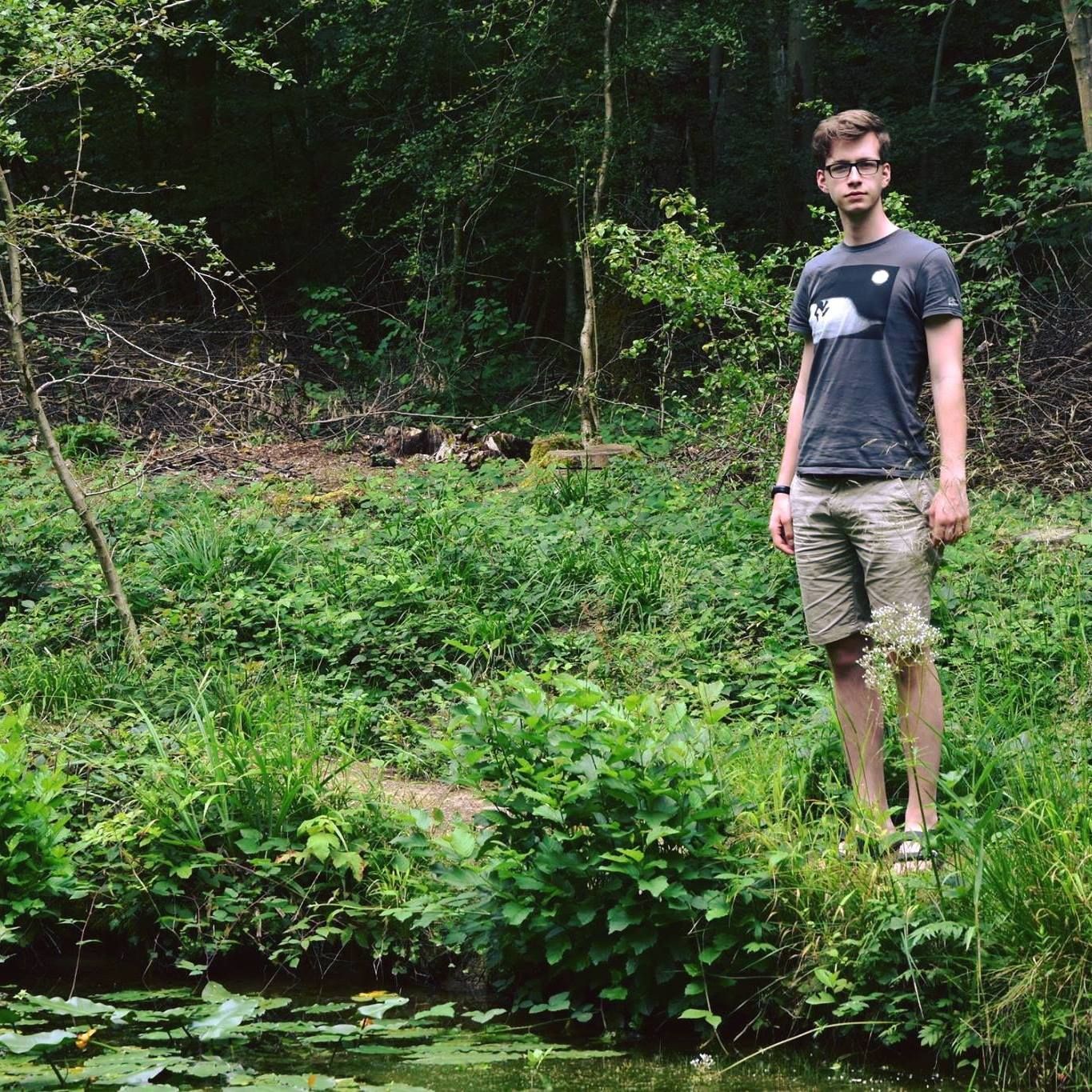
Arian ( @applepiie ) is and ETH student and a miner of Deep Space Computing. His rig BigBoy features one GTX 1060 and one GTX 1080.
To date, we have three arbitrage bots up and running. If you are interested, the source code is here. The biggest does arbitrage between gridcoin and bitcoin. Another one does arbitrage between bitcoin and ethereum. We will feed additional ethereum to it by selling SPARC tokens, which we receive from here. The last one does arbitrage between Steem and bitcoin. Using arbitrage bots, we increase liquidity to exchanges and we are rewarded with little gains.
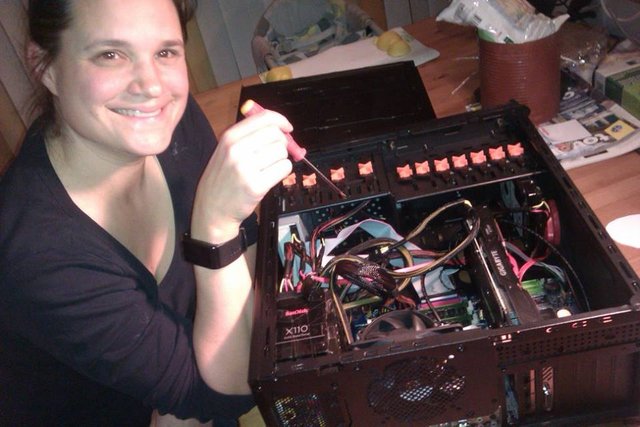
Picture: Virgi while building deepmind, a computer with a GTX 1080.
For the future: we need to become profitable, as we are still mining with losses. We are recovering heat from mining equipment to heat our houses:
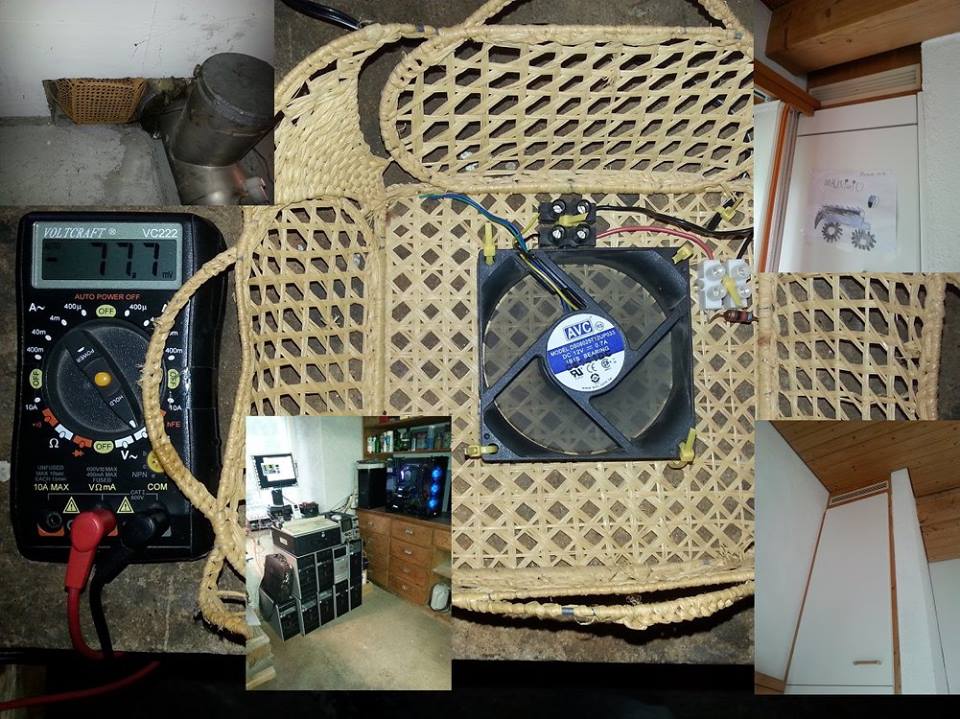
Picture: Our house features a gridcoin heating system. Biggest disadvantage is that when it is very cold computer runs smoother and generate less heat.
There is one place in our valley where power is very cheap: 0.03$/kWh. This is due to an agreement with the regional power plant company: Miralago gets power very cheap in exchange of water usage rights. We will move some of our servers to people living there, but for some we still need to convince them and to work out an agreement.
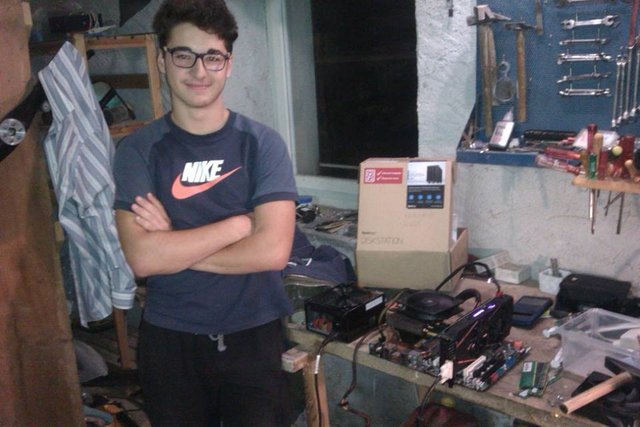
Picture: Benny Del Don with his blackminer running on the testbench.
Finally, one day in a not too distant future, (say in 5 years from now), I would like to see the following feature in Gridcoin, and with this one I start the last thread of the article, which might sound a bit of phantasy, but I strongly believe everyone is allowed to dream. Of course, people will object that current legislation is against DAOs, and that it is not the moment and whatever prevents good ideas from being realized. If you wait for thing to happen, they never happen. In the end, dreams are the engine that advances mankind. This is Zen philosophy applied.
So this is the "gridcoin funded science" feature description, nothing new, other coins already implement some version of it:
If gridcoin would introduce a fix amount in the coinbase of each block with empty input and output a special gridcoin address named 'Gridcoin Funding', the network would collect gridcoins to that special address for each block added to the blockchain. People with an idea who would like to get funded, they would first submit their proposal in form of a whitepaper to the gridcoin community plus a gridcoin address to receive fundings plus the amount of gridcoins needed to fullfill the project. If the proposal fits some basic prerequisites, a special Gridcoin poll will be created on the blockchain asking the community to get funds for the project. In this special poll the gridcoin address of the project and the requested sum of gridcoins will be hardcoded. If the community approves the poll, funds will be automatically sent to that gridcoin address.
Getting all fundings in the beginning are normally a bad motivator. So there will be a mechanism which will pay out the amount to the gridcoin address split in fixed intervals, for example monthly. There will be a mechanism to issue a second poll to ask to stop of fundings, in case the project is not performing as expected.
On September 10, 2017, the market capitalization of Bitcoin was 67'641'887'163 $ composed by a circulating supply of 16'556'575 of bitcoins at a price of 4'085.50 $. If one percent of that bitcoins would have been spent to a similar fund described above, the fund would have about 676 million dollars available for projects.
Malaria is a diffuse disease in Africa but pharmaceutical companies are not investing in medecines for it, not because they are bad as in any good conspiracy theory, but simply because they can not afford to pay the research and development bill with the money they would collect from poor people with that disease. Imagine for a moment a pharmaceutical company asking for a 100 million dollars from the gridcoin fund to start research on malaria cures. Although utopic, the scenario is not completely unthinkable, viewed the numbers of bitcoin in the previous paragraph.
Or imagine a hypothetical researcher in Electrodynamics using gridcoin funds unifying electromagnetism and gravitation and wiping out some phantastillion tons of dark matter from the Universe.
Or imagine Elon Musk funding the settlement of humans on Mars with gridcoins.
Having traditionally funded science compete against gridcoin funded science could spark the next scientific revolution since the Age of Enlightenment.
You know, in my garage close to the gridcoin mining cluster, there is place for an X-Wing starship, R&D gridcoin funded, of course.
And what about your garage?
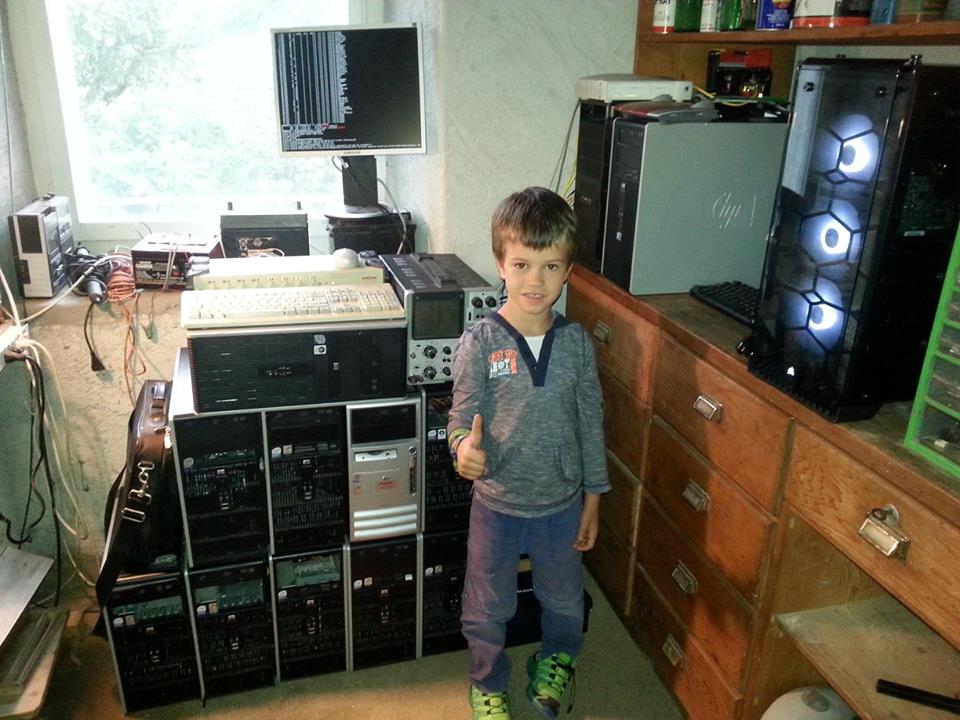
Picture: Mauri in front of the Core Duo cluster, a bunch of old hardware retrofitted to run BOINC and gridcoin

Picture: Hacker Ninja (Stefano Godenzi) is a miner of Deep Space Computing. He also holds many chicken.
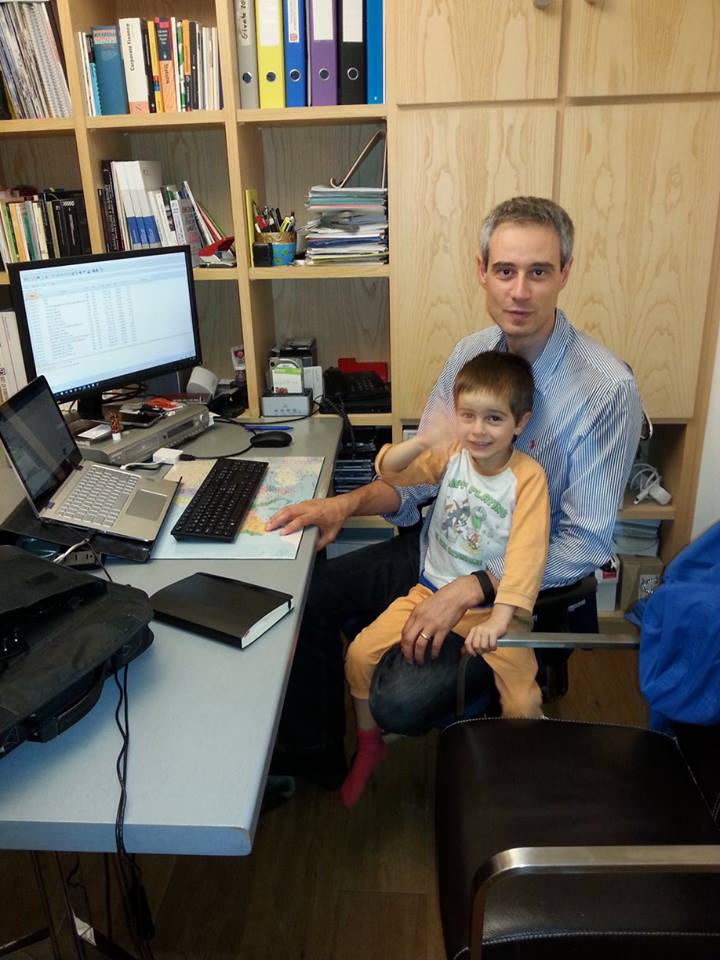
Picture: Fabio Zanetti and his son Leo while doing accounting for Deep Space Computing.
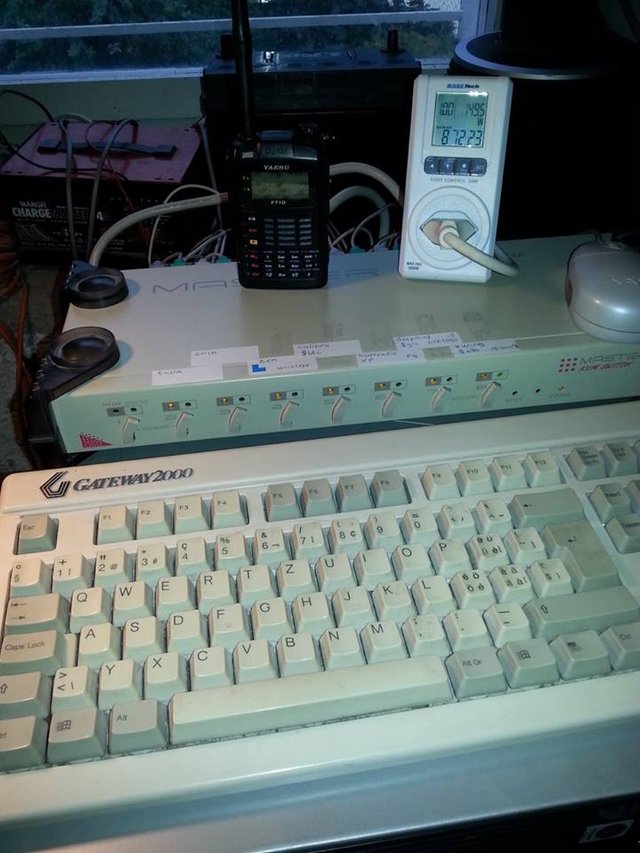
Picture: You can read the cluster consumption on the top right of the cost control display.
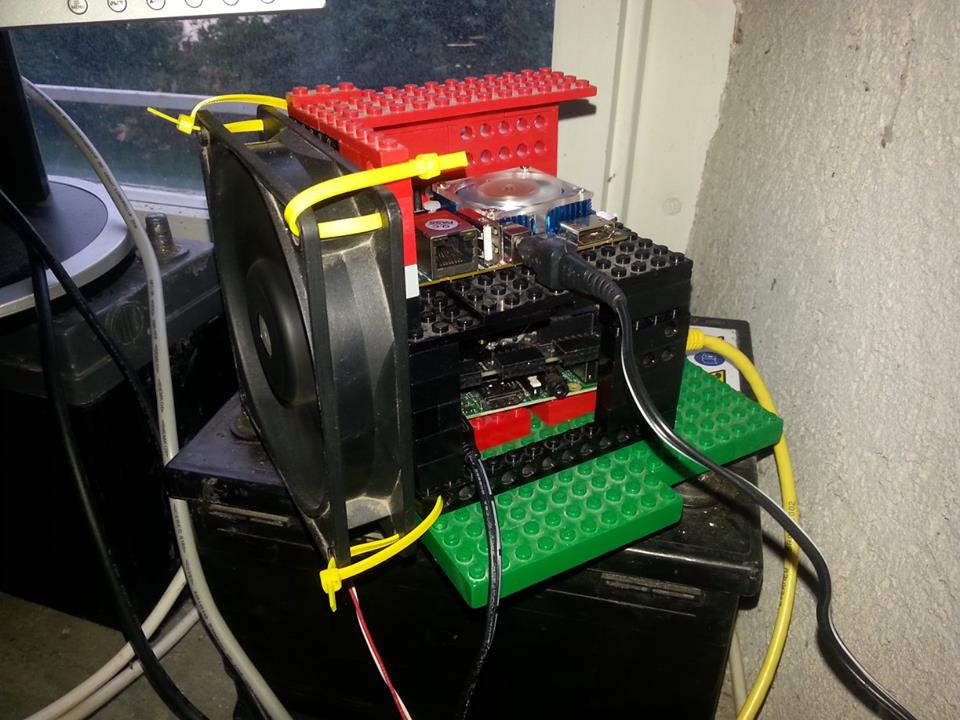
Picture: On top of the Lego case built by Mauri and Marti there is an Odroid XU4 running BOINC. At bottom there is a Raspberry Pi 3 running BOINC and several bots to collect meteo data and also arbitrage bots on exchanges for cryptocurrencis. The FPGA above it (ValentFX LogiPi) is for future use.

Picture: Miner's happiness of Marti, Mauri, Virgi and Michele when they are close to the mining facility.
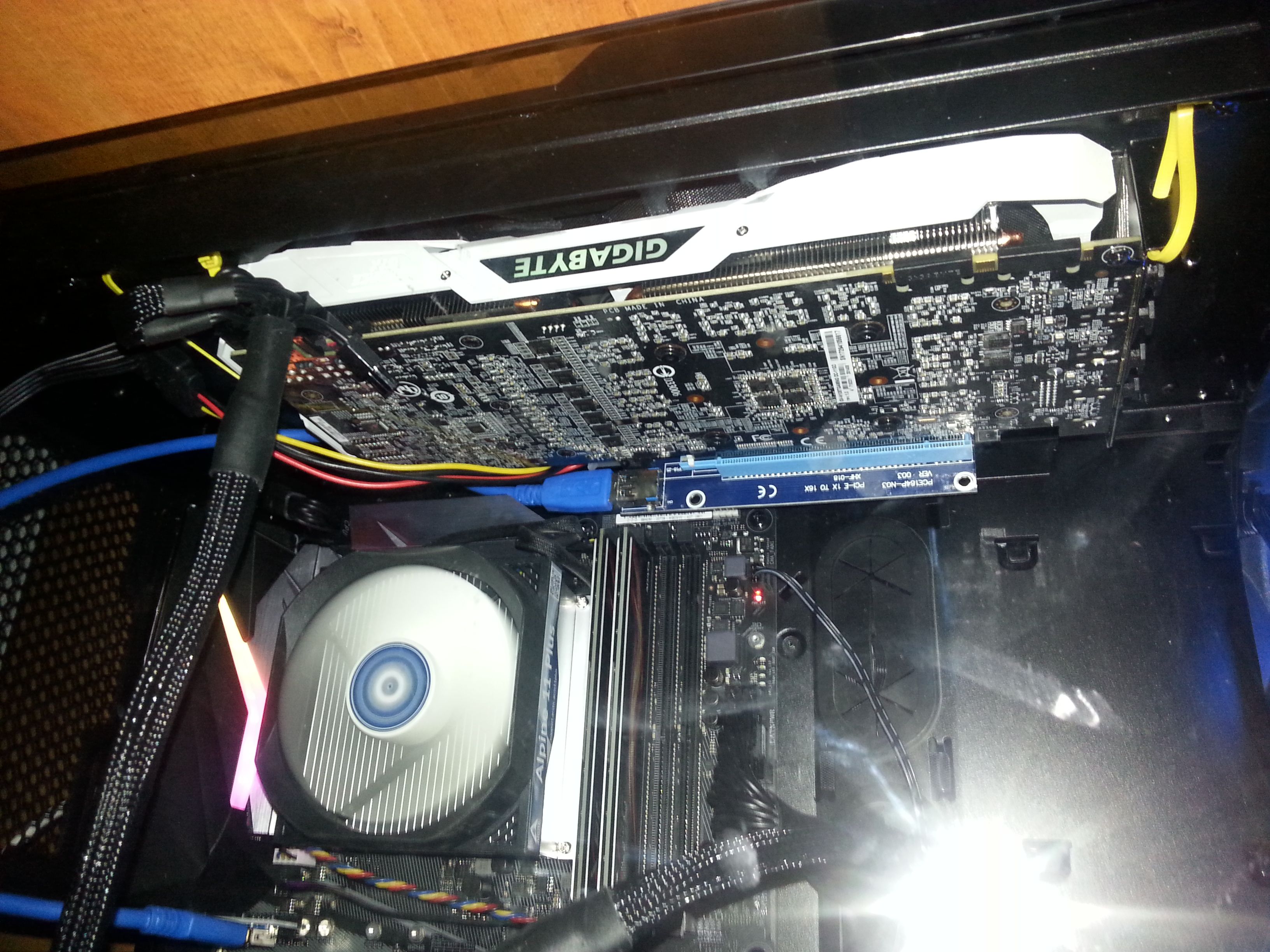
Picture: A Nvidia GTX 1080Ti hanging from the ceiling of deepspace computer.
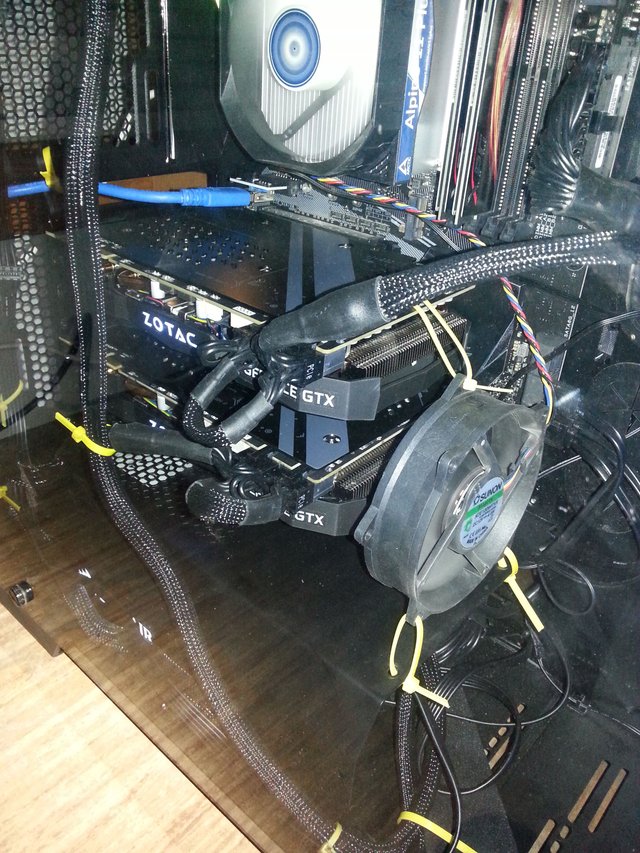
Picture: Two Nvidia GTX 1080 Ti at the bottom of deepspace computer with a CPU fan in front to provide additional cooling.
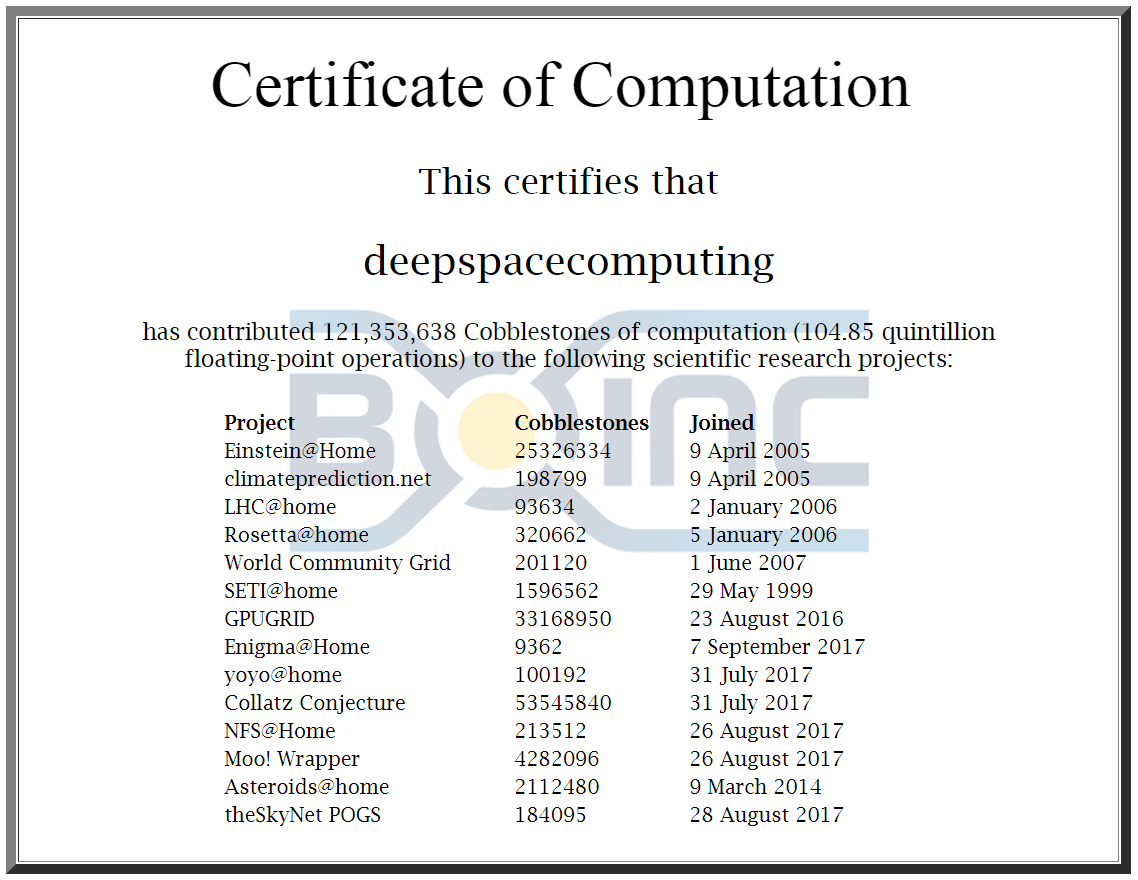
Picture: Recent certificate of computation for Deep Space Computing showing dates of joining BOINC projects.
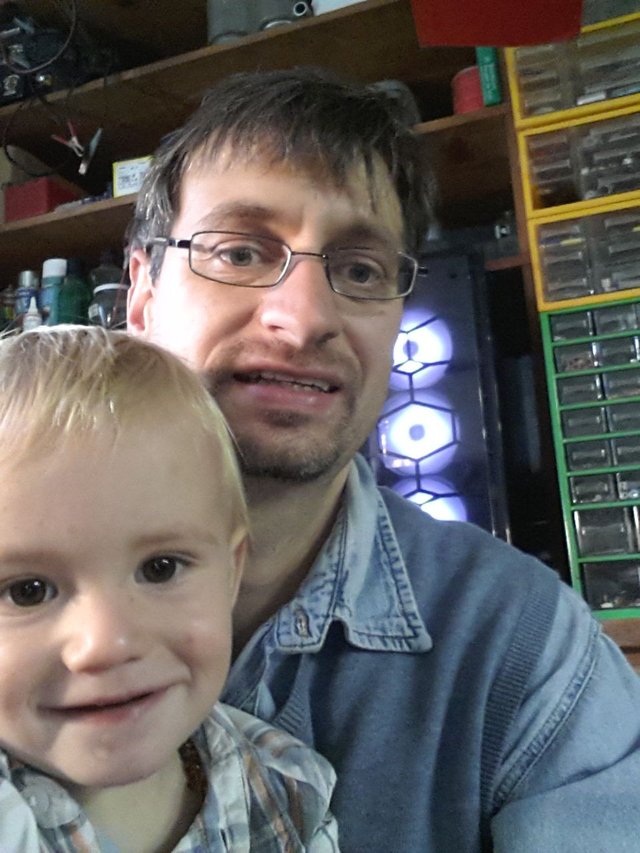
Picture: Michele and Tiz in the garage.

Picture: Virgi, Mauri and Michele showing a cellphone that runs BOINC when idle.
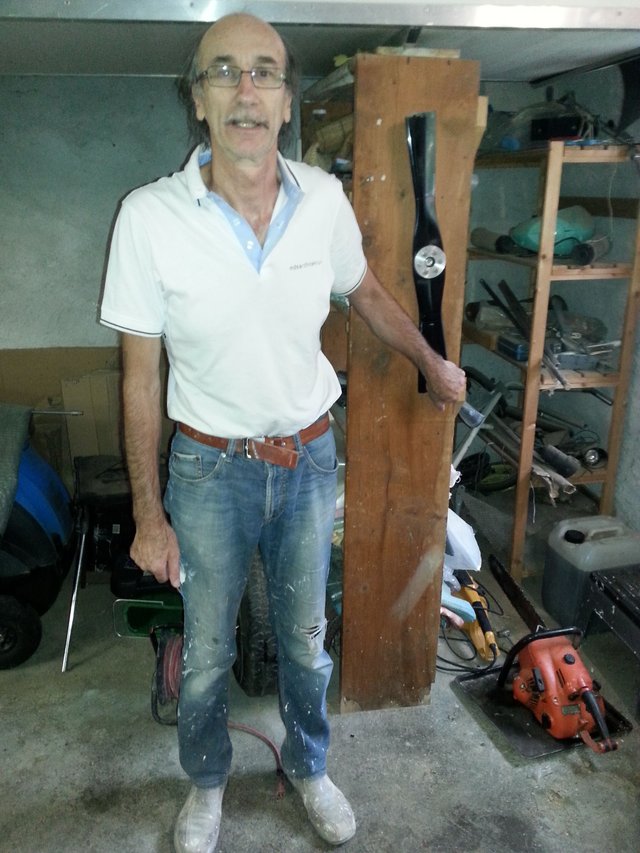
Picture: Nonno Livio points to the airscrew of his X-Wing. It broke during a failed take off.
Post Scriptum:
I just discovered that the "Gridcoin funded research" proposal looks very similar to the Einsteinium coin goal.
At time of writing Einsteinium coin ($EMC2) has a market capitalization of 14 million dollars.
Gridcoin market cap is less, about 12 million dollars. If we would implement "Gridcoin funded research", we could tap into Einsteinium market capitalization :-)
Post Scriptum 2: I was joking. We have a second garage close to the first and the X-Wing is already there:
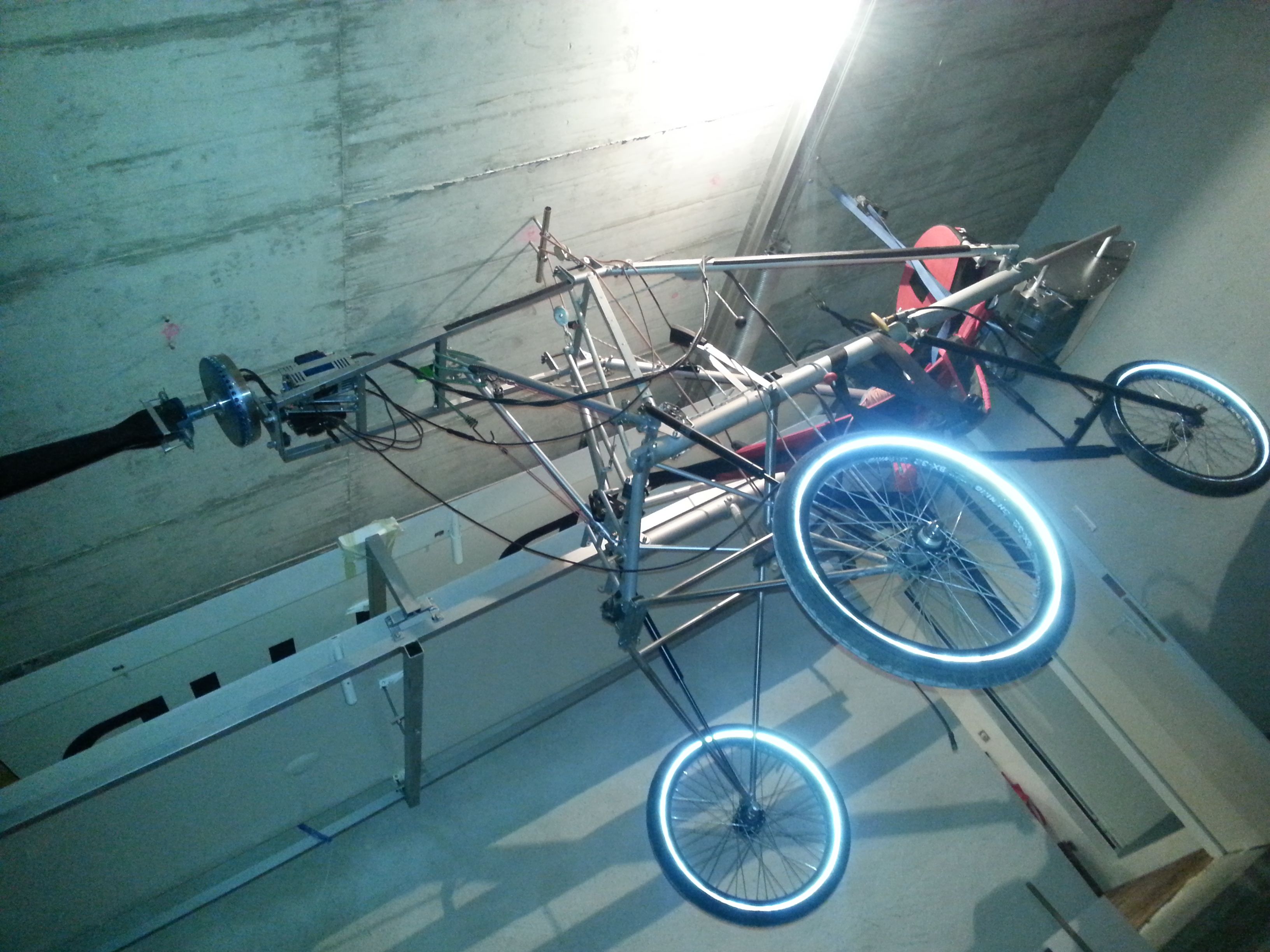
The modified Swift is hanging from the ceiling of our second garage.
Nonno Livio built it and he added electric engine and gears according to his design. The new airscrew claps when the engine is off to minimize air resistance when landing.
You can find some videos of the Swift flying here (Video 1, Video 2). Now you know for what the WD-40 cans pictured behind the computer cluster are for :-)
Brilliant post.
To my mind, as much as I love Gridcoin it has one issue. That is that there is no way to use them other than trading, this in the long run will just devalue the coins as more and more are created.
Now using the coins to buy computing power as part of the funding of projects would be a great way to use/burn coins therefore reducing supply and creating demand.
E.g:
New coins can still be minted through work on the whitelisted projects which are mainly non profit. But this enables a (profit making) organisation to buy computing power as well, they do this by buying Gridcoins. These could then be paid to a specific project address on the blockchain and are burnt at the rate that new coins are minted by crunchers of that project.
I really should put this into a post of my own rather than comment!!
yes, please @guk write a dedicated post on steemit with your idea. I hope to be the first to upvote it :-)
Hi Tiz
Great post, was a pleasure to read! It would be great if you could put a sentence below the images to explain who or what they depict exactly.
hey Arian, I added sentences to each image as per your request. ciao :-)
Love this 😀
Amazing story! Thanks for sharing!
Always fun to see little but efficient raspberries with fan mounted lego technic frames standing beside triple high end gpu power pc's. I wish you guys the best!
Gridcoin Funding is a great idea. You demonstrate here why it is great from a technological point of view. guk in his comment shows how it is profitable as well. I think this idea should be submittted to #goodideas on the TeamGridcoin slack.
hi zipity, i wrote the idea in #goodideas of Teamgridcoin slack as you suggested! thank you for the hint Tiz
I just discovered that the "Gridcoin funded research" proposal looks very similar to the Einsteinium coin goal: http://ftreporter.com/what-is-einsteinium/
Einsteinium coin ($EMC2) has a market capitalization of 14 million dollars: https://coinmarketcap.com/currencies/einsteinium/
Gridcoin market cap is 12 million dollars:
https://coinmarketcap.com/currencies/gridcoin/
Implementing "Gridcoin funded research", we could tap into Einsteinium market capitalization.
(I added this comment as Post Scriptum to the article, because I think it is important)
article update: I added the X-wing picture and wrote descriptions for all pictures.
"WD-40 for life"
ty for this very good posting .
Congratulations @dangermouse77! You have completed some achievement on Steemit and have been rewarded with new badge(s) :
Click on any badge to view your own Board of Honor on SteemitBoard.
For more information about SteemitBoard, click here
If you no longer want to receive notifications, reply to this comment with the word
STOP